
The CORONA program was a series of American strategic reconnaissance satellites produced and operated by the Central Intelligence Agency (CIA) Directorate of Science & Technology with substantial assistance from the U.S. Air Force. The CORONA satellites were used for photographic surveillance of the Soviet Union (USSR), China, and other areas beginning in June 1959 and ending in May 1972.

The SAMOS or SAMOS-E program was a relatively short-lived series of reconnaissance satellites for the United States in the early 1960s, also used as a cover for the initial development of the KH-7 GAMBIT system. Reconnaissance was performed with film cameras and television surveillance from polar low Earth orbits with film canister returns and transmittals over the United States. SAMOS was first launched in 1960 from Vandenberg Air Force Base.

Mid-air retrieval is a technique used in atmospheric reentry when the reentering vehicle is incapable of a satisfactory unassisted landing. The vehicle is slowed by means of parachutes, and then a specially-equipped aircraft matches the vehicle's trajectory and catches it in mid-air.
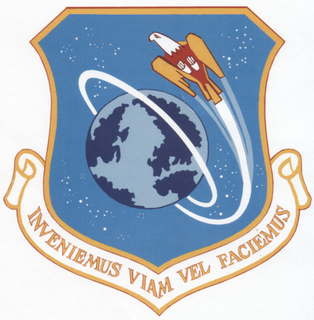
The United States Air Force's Air Force Satellite Control Facility (AFSCF) was a space command and control unit located at Onizuka AFB, California. It has the distinction of being heavily involved in the world's first reconnaissance satellite program, CORONA. Due to geological hazards, and the terrorism threat from its proximity to a major transportation link, the facility's command and control functions were moved to Schriever AFB, Colorado.

The 456th Bombardment Wing is an inactive United States Air Force unit. It was last assigned to the 14th Air Division of Strategic Air Command at Beale Air Force Base, California, where it was inactivated on 30 September 1975. The wing's predecessor was the 456th Bombardment Group, a World War II United States Army Air Forces combat organization that flew from Italy while assigned to Fifteenth Air Force. It earned two Distinguished Unit Citations for valor in combat and participated in the strategic bombing campaign against oil production targets including those near Ploiești, Romania, attacks that resulted in high bomber losses. The group also served as a troop carrier unit in the Air Force Reserve from 1947 to 1949 and as the flying element of the wing from 1952 to 1955.
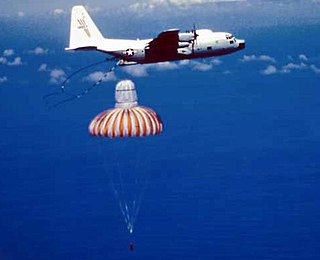
The 6594th Test Group was a United States Air Force Unit stationed in Hawaii at Hickam Air Force Base from 1958 until it was inactivated in 1986.
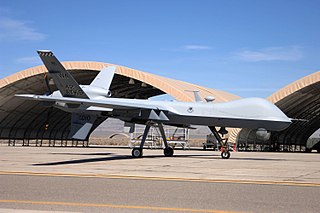
The 432nd Wing is a United States Air Force unit assigned to Air Combat Command at Creech Air Force Base near Indian Springs, Nevada. It flies General Atomics MQ-9 Reaper and RQ-170 Sentinel Unmanned aerial vehicles.

Discoverer 14, also known as Corona 9009, was a spy satellite used in the Corona program managed by Advanced Research Projects Agency (ARPA) of the Department of Defense and the United States Air Force. On 19 August 1960, usable photographic film images of the Soviet Union taken by the satellite were recovered by a C-119 recovery aircraft. This was the first successful recovery of film from an orbiting satellite and the first mid-air recovery of an object returning from Earth orbit.

Discoverer 13 was an American optical reconnaissance satellite launched on 10 Aug 1960 at 20:37:54 GMT. The last of five test flights of the Corona KH-1 spy satellite series, it was the first fully successful flight in the Discoverer series. On 11 Aug, after 17 orbits, the satellite's reentry capsule was recovered in the Pacific Ocean by the Haiti Victory. Its payload, an American flag, was presented to President Eisenhower four days later.
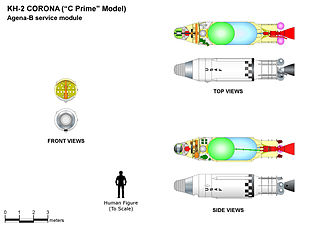
Discoverer 25, also known as Corona 9017, was an American optical reconnaissance satellite which was launched in 1961. It was the fifth of ten Corona KH-2 satellites, based on the Agena-B.

Discoverer 18, also known as Corona 9013, was an American optical reconnaissance satellite launched on 7 December 1960 at 20:24:00 GMT. It was the first successful, and the third of ten total Corona KH-2 satellites, based on the Agena-B.
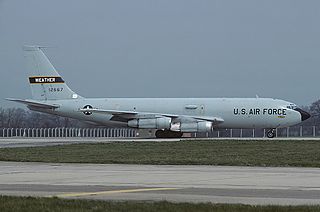
The 55th Space Weather Squadron is an inactive United States Air Force unit. It was last assigned to the 50th Operations Group at Schriever Air Force Base, Colorado, where it was inactivated on 16 July 2002.
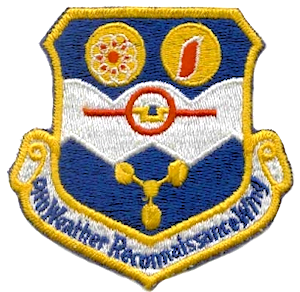
The 9th Weather Reconnaissance Wing is an inactive United States Air Force organization. Its last assignment was with Air Weather Service at McClellan Air Force Base, California, where it was inactivated on 31 August 1975.

The 67th Cyberspace Wing is a United States Air Force wing stationed at Lackland Air Force Base, Texas. It was activated in October 1993 as a military intelligence unit and is assigned to the Sixteenth Air Force.

Discoverer 2 was an American optical reconnaissance satellite launched on 13 April 1959 at 21:18:39 GMT, the second of three test flights of the Corona KH-1 spy satellite series. Discoverer 2 was the first satellite to be stabilized in orbit in all three axes and to be maneuvered on command from the earth. Though it carried no film and thus conducted no surveillance, Discoverer 2 was both the first satellite equipped with a reentry capsule and the first to return a payload from orbit. A timing error caused the reentry capsule to land near the island of Spitzbergen, Norway, rather than Hawaii. A joint US-Norway recovery operation was mounted, but it was unsuccessful. The Soviet Union operated mines under lease on the island and may have recovered the capsule. That claim is disputed.

Discoverer 3 was an American optical reconnaissance satellite launched on 3 June 1959 at 20:09:20 GMT, the third of three test flights of the Corona KH-1 spy satellite series. The first Discoverer mission to carry live animal passengers, Discoverer 3 was lost when its carrying Agena-A booster crashed into the Pacific Ocean.

Discoverer 5, also known as Corona 9002, was an American optical reconnaissance satellite launched on 13 August 1959 at 19:00:08 GMT, the second of ten operational flights of the Corona KH-1 spy satellite series. Though the satellite was successfully orbited, the onboard camera failed within the first orbit, and the film-return capsule failed to deorbit.

Discoverer 6, also known as Corona 9003, was an American optical reconnaissance satellite launched on 19 August 1959 at 19:24:44 GMT, the third of ten operational flights of the Corona KH-1 spy satellite series. Though the spacecraft was orbited successfully, the onboard camera ceased operating by the second orbit, and the film-return capsule could not be recovered.

Discoverer 7, also known as Corona 9004, was an American optical reconnaissance satellite launched on 7 November 1959 at 20:28:41 GMT, the fourth of ten operational flights of the Corona KH-1 spy satellite series. Though the satellite was orbited successfully, its film capsule failed to separate from the main satellite.















